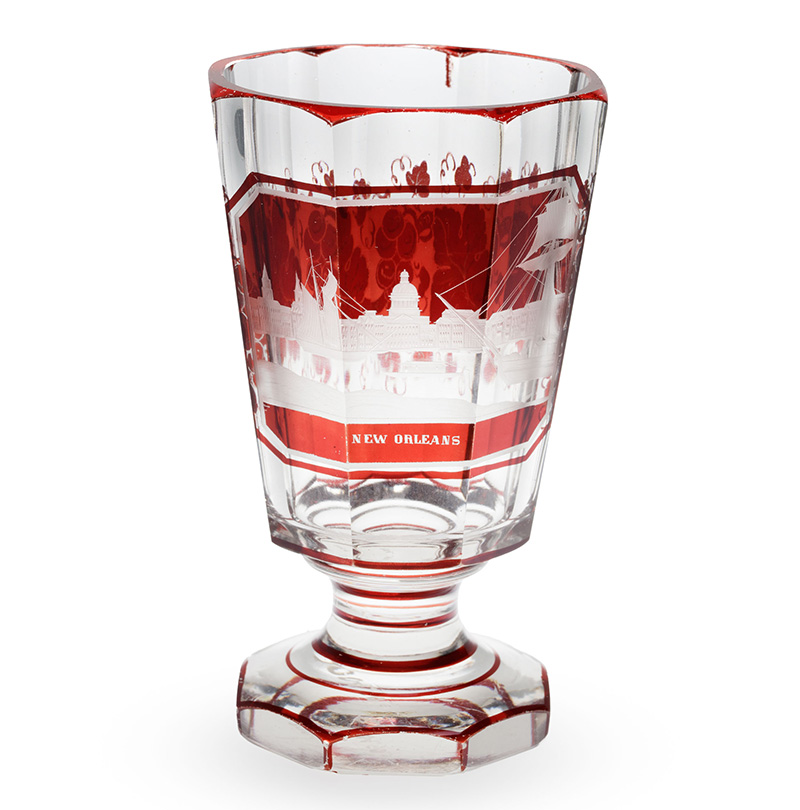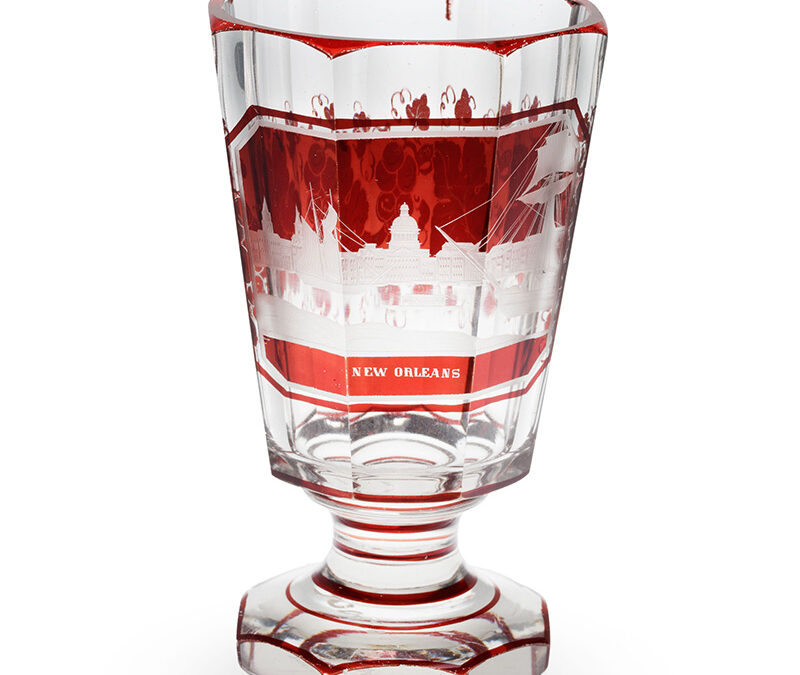Goblet

| Maker | No known maker |
| Date of Creation | 1840–50 |
| Location | Probably Bohemia (present-day Czech Republic); Used in New Orleans, LA |
| Materials | Glass, ruby stained, engraved |
| Institution | New Orleans Museum of Art |
| Credit Line | Museum Purchase from the William McDonald Boles and Eva Carol Boles Fund |
| Accession Number | 2004.5 |
| Photo Credit | Photo by Sesthasak Boonchai, New Orleans Museum of Art |
In the delicately etched scene of a 19th-century souvenir glass goblet, a hidden narrative unfolds, revealing layers of United States history in the quintessential American city of New Orleans. Engraved with the city’s name and adorned with a bustling scene along the Mississippi River featuring the iconic cupola of the St. Charles Hotel, the goblet offers a glimpse into a vibrant tapestry of local history—of intertwined trade, religion, labor, and the harsh reality of enslavement throughout multiple regions of the world. As the majestic dome of New Orleans’s St. Charles Hotel rose to the sky in 1837, it symbolized grandeur and opportunity for the city’s elite. But behind this façade of prosperity lay a darker truth. Enslaved individuals, their hands toiling to erect iconic structures like the hotel, were integral to the city’s growth. The hotel became a site for the auctioning of human lives, a cruel reminder of New Orleans’ status as the largest port for trading enslaved people. Within the walls of these grand buildings, where opulent parties and fine dinners took place, others were bought and sold as commodities. This souvenir goblet, once a token of travel and adventure, now serves as a potent reminder of the city’s and our nation’s complicated past—one of vast economic gains usually achieved through oppression. The goblet reveals not just a story of New Orleans, but a story of the United States and its dependence upon Black and Brown bodies, a story full of exploitation and struggle for liberation. These collectible vessels, though originally intended for drinking, now serve a greater purpose—to spark conversation and evoke memories of a past that must not be forgotten. Through the lens of the souvenir goblet, we are invited to explore the entire tapestry of the history of New Orleans, and this country, confronting its complexities and confronting the uncomfortable truths that lie beneath its surface.

